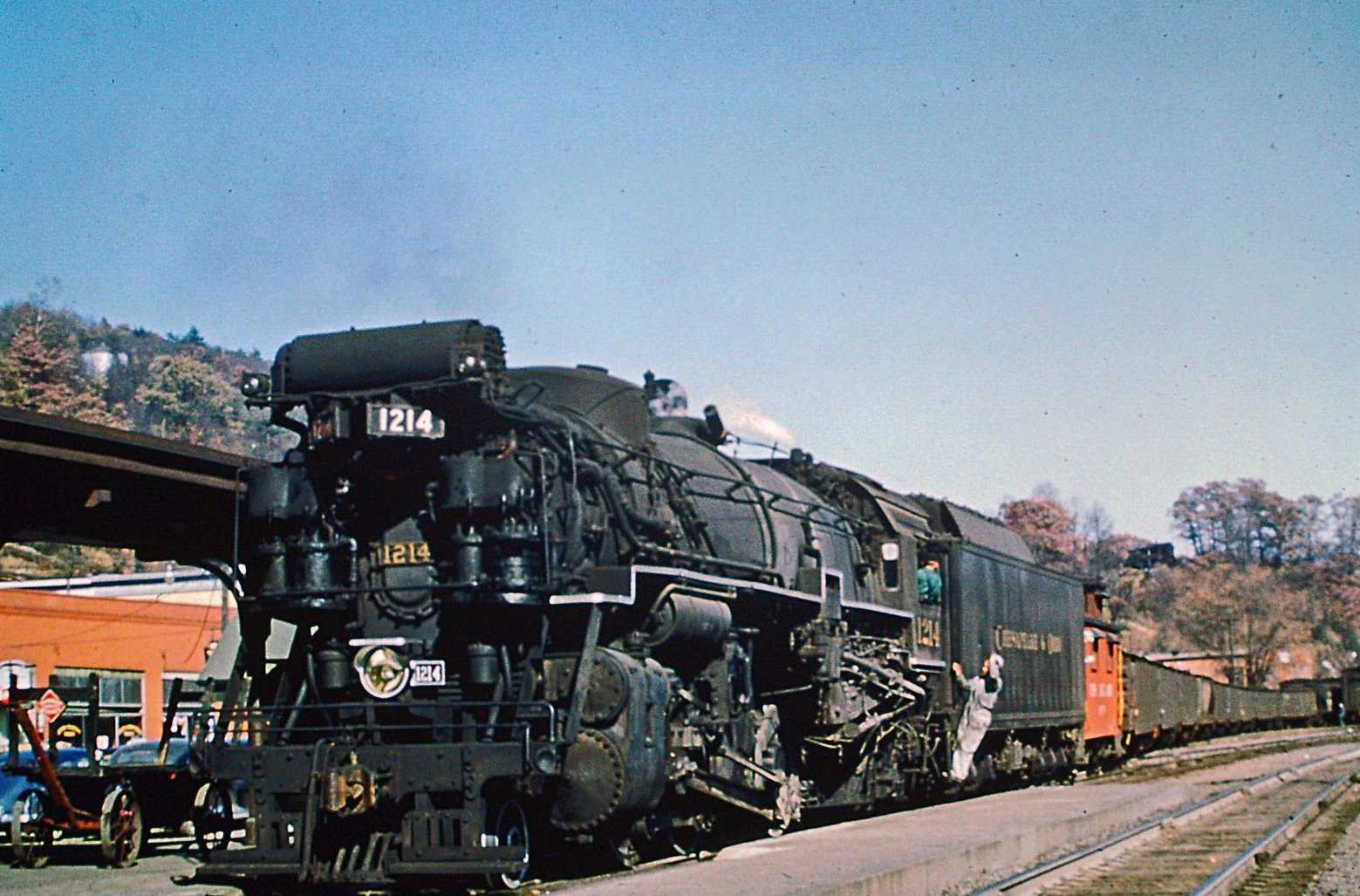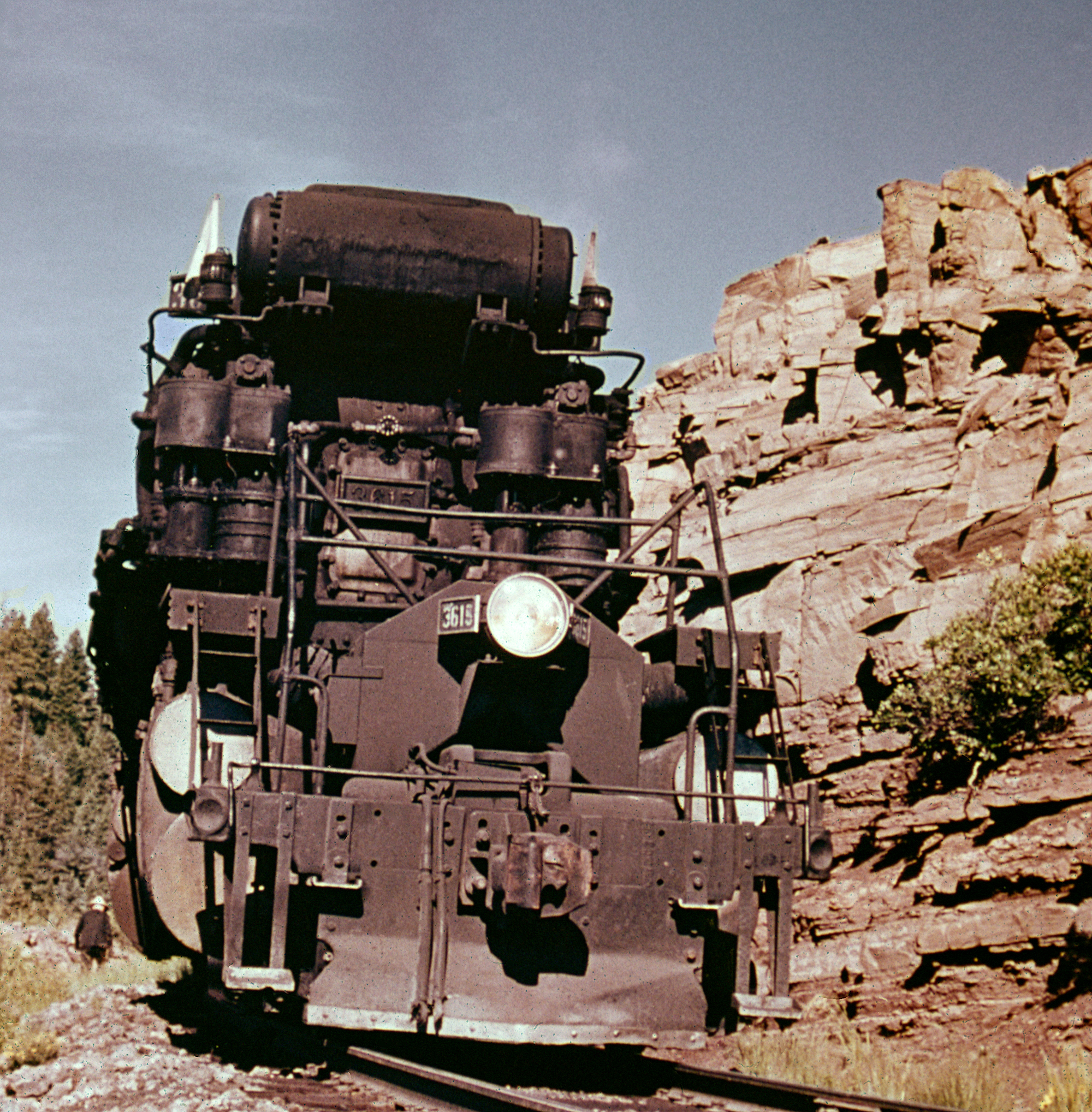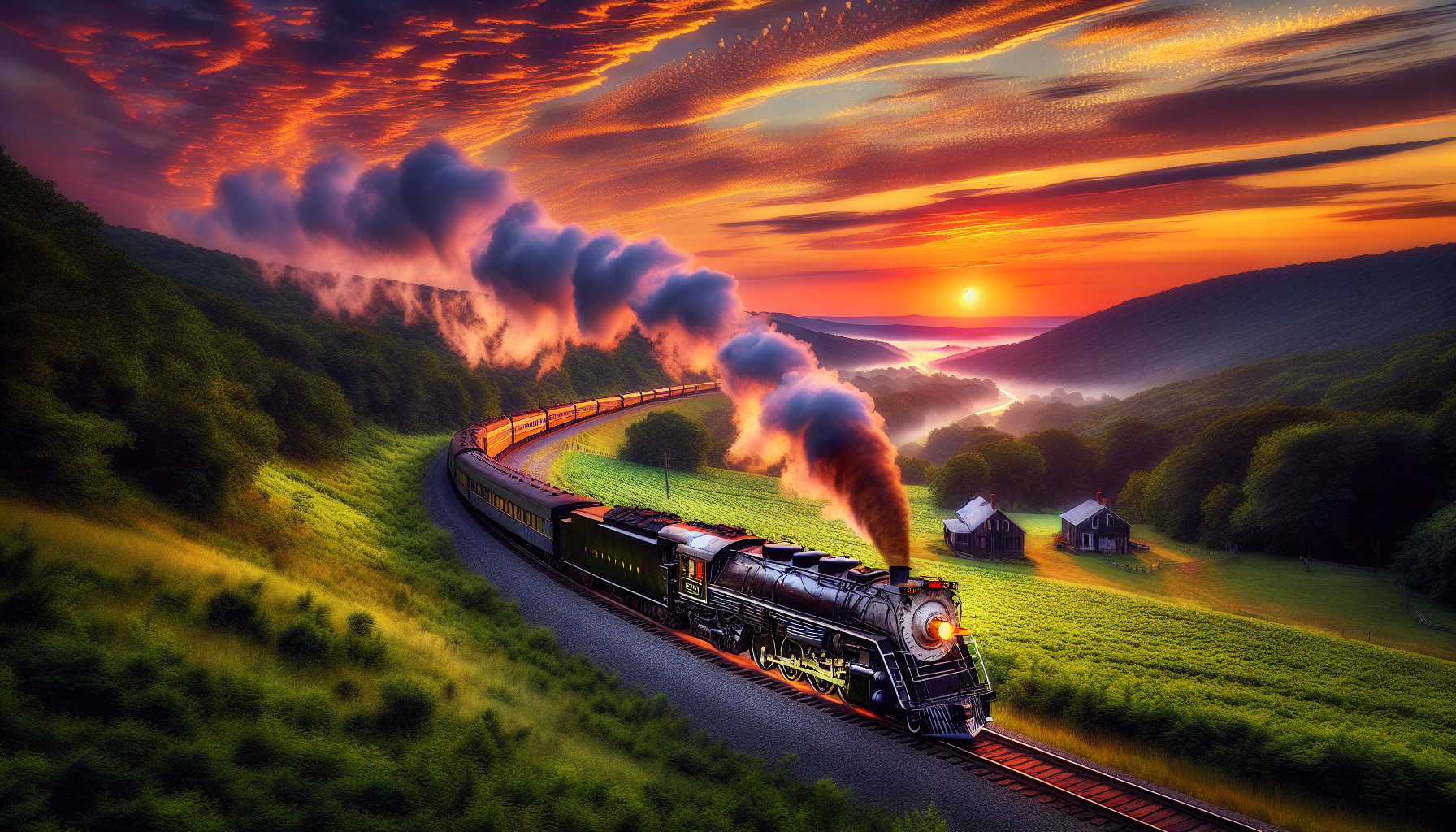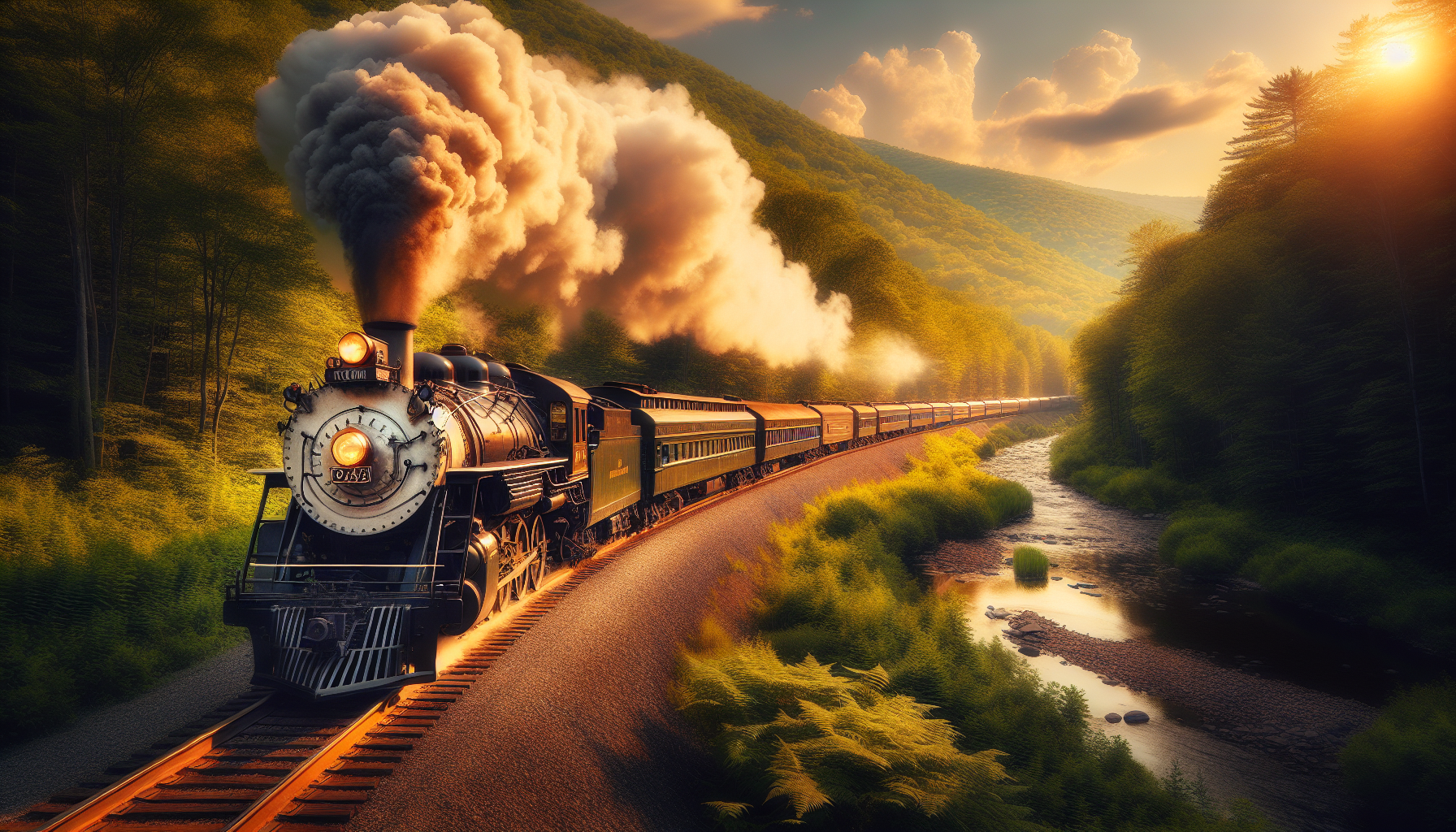Feedwater Heaters: Improving Locomotive Efficiency
Published: August 7, 2024
By: Adam Burns
Steam locomotives, the iron giants of the industrial age, have always been a marvel of engineering and ingenuity. Among the many innovations designed to improve their efficiency and performance, the feedwater heater holds a particularly significant place.
This device, which plays a critical role in the boiler's operation, epitomizes the pursuit of excellence in steam technology. In this article, we will explore the history and purpose of feedwater heaters, examining their development, functionality, and impact on locomotive efficiency.
 Chesapeake & Ohio 2-8-2 #1214 (Class K-3) switches coal hoppers at Ronceverte, West Virginia on October 22, 1952. The C&O owned hundreds of 2-8-2's, many manufactured by American Locomotive, and was a big proponent of the feedwater heater on its locomotives. All were scrapped by the early 1950's.
Chesapeake & Ohio 2-8-2 #1214 (Class K-3) switches coal hoppers at Ronceverte, West Virginia on October 22, 1952. The C&O owned hundreds of 2-8-2's, many manufactured by American Locomotive, and was a big proponent of the feedwater heater on its locomotives. All were scrapped by the early 1950's.Origins of Steam Locomotive Efficiency Enhancement
Steam locomotives operate by boiling water to produce steam, which then drives pistons connected to wheels, propelling the train forward. The efficiency of this process significantly depends on how quickly and efficiently water can be turned into steam.
Early steam engines were relatively inefficient, losing large amounts of heat and using a lot of fuel. Engineers began exploring ways to improve this process to maximize the power output of locomotives and reduce operational costs.
One of the key innovations in this regard was the feedwater heater. The principle behind this device is simple yet effective: by preheating the water before it enters the boiler, less additional heat is required to convert it to steam. This preheating process enhances overall thermal efficiency and ensures a more effective use of fuel.
Development
The concept of preheating water in steam engines dates back to the mid-19th century. However, it was not until the early 20th century that feedwater heaters started to become more standardized and widespread.
Their use coincided with other advancements in locomotive technology, such as superheating and improved boiler designs, which collectively aimed to enhance the efficiency and performance of steam engines.
Maintaining a constant water level in the boiler is essential, and this is achieved by drawing water from the tender. Both the engineer and fireman have the ability to control the flow of this water into the boiler.
Typically, the water in the tender is at ambient temperature, while the boiler operates at around 400 degrees Fahrenheit. When relatively cold water from the tender is injected into the boiler, it undergoes some preheating, reaching approximately 200 degrees Fahrenheit.
However, this still leaves a significant 200-degree temperature differential, which can cause thermal stress on the boiler and drain its energy reserves, as the heating energy is sourced from the boiler itself.
How They Work
A feedwater heater typically operates by utilizing waste heat that would otherwise be lost. In a steam locomotive, this waste heat is often found in the exhaust steam after it has performed work in the cylinders. The feedwater heater captures this waste steam and uses it to heat the incoming cold water before it enters the boiler.
Feedwater heaters typically replace the injector on the fireman's side of the locomotive. Despite their clear benefits, not all steam locomotives were equipped with feedwater heaters.
This was primarily due to railroads having to balance higher maintenance costs against the price of fuel. In some cases, fuel costs were lower than the expenses associated with maintaining feedwater heaters.
There are two main types of feedwater heaters: open and closed. Each type has its own mechanism for utilizing exhaust steam to preheat the water, contributing to more efficient and effective locomotive operations.
 Rio Grande 2-8-8-2 #3615 (L-132) is stopped in a curve at Sierra, Colorado in 1950. Note the big feedwater heater atop the smoke box. Robert LeMassena photo. American-Rails.com collection.
Rio Grande 2-8-8-2 #3615 (L-132) is stopped in a curve at Sierra, Colorado in 1950. Note the big feedwater heater atop the smoke box. Robert LeMassena photo. American-Rails.com collection.Types
Open Feedwater Heaters
Open feedwater heaters allow for direct mixing of feedwater and steam, necessitating the use of two pumps. A prominent example of this type is the Worthington. However, a notable drawback is the contamination of feedwater by valve lubrication oil present in the exhausted steam, which then enters the boiler.
Closed Feedwater Heaters
In contrast, closed feedwater heaters operate by running feedwater through a small pipe enclosed within a steam-filled chamber. The condensed steam is collected and redirected back into the tender.
While this design effectively separates the water and steam, it comes with its own challenge: the small copper piping used is susceptible to leaks.
Examples of closed feedwater heaters include the Elesco and Coffin models. Interestingly, the name "Elesco" is derived from the "Locomotive Superheater Company," abbreviated as "LSCo" and pronounced "El-Es-Co."
Each of these types has unique characteristics and applications, but they all provide the fundamental benefit of improving the heat transfer process, thus enhancing boiler efficiency and locomotive performance.
Impact on Steam Locomotive Efficiency
The introduction of feedwater heaters had a profound impact on the performance and efficiency of steam locomotives. By preheating the feedwater, these devices reduced the amount of fuel required to raise the water to boiling point. This not only resulted in fuel savings but also allowed locomotives to generate steam more quickly, improving overall operational efficiency.
Several tangible benefits arose from the implementation of feedwater heaters:
1. **Fuel Efficiency**: By utilizing waste heat to preheat the feedwater, locomotives could reduce their fuel consumption. This was particularly important during times of fuel scarcity or high costs.
2. **Increased Power Output**: Preheated water allowed boilers to produce steam more rapidly, improving the locomotive's ability to generate power and maintain high speeds over longer distances.
3. **Reduced Thermal Stress**: Preheating the feedwater helped to minimize thermal stress within the boiler. Sudden temperature changes caused by injecting cold water into a hot boiler could lead to metal fatigue and potential damage. Feedwater heaters mitigated this risk by ensuring the water entered the boiler at a higher temperature.
4. **Extended Boiler Life**: By reducing thermal stress and improving efficiency, feedwater heaters contributed to the longevity of locomotive boilers, reducing maintenance costs and downtime.
Identification
Feedwater heaters on steam locomotives are easily recognizable by their distinctive location and shape. The Elesco bundle-type feedwater heaters typically sit within a horizontal cylinder mounted above the smokebox. Occasionally, they might be partially inset into the top of the smokebox, making them a prominent feature.
In contrast, Coffin feedwater heaters are usually contained within the top of the smokebox. However, when retrofitted to older locomotives, they are often positioned in front of the smokebox, offering a different visual cue.
Worthington feedwater heaters come in different styles. The Worthington BL type is frequently mounted on the side of the locomotive and can be easily mistaken for an air pump by those unfamiliar with steam locomotive components. Conversely, the Worthington SA type is commonly inset into the top of the smokebox, blending seamlessly with the engine's design.
By the 1930s, the inclusion of feedwater heaters had become standard in steam locomotive construction, with the Worthington SA type emerging as the most popular due to its efficiency and reliability.
Legacy and Influence on Modern Rail Transport
The principles behind feedwater heaters have transcended their original application, influencing modern rail transportation and other industries. The concept of waste heat recovery and efficient thermal management has been adapted into contemporary technologies such as cogeneration systems and industrial boilers.
In modern diesel and electric locomotives, the pursuit of efficiency continues to be paramount. While the techniques and technologies may have evolved, the underlying principle of enhancing energy utilization through preheating and waste heat recovery remains a cornerstone of modern engineering.
Conclusion
Feedwater heaters stand as a testament to the relentless pursuit of efficiency and performance in steam locomotive design. By ingeniously capturing and repurposing waste heat, these devices played a crucial role in improving the thermal efficiency, fuel economy, and operational capabilities of steam engines. They enabled locomotives to reach new heights of power and speed while extending the lifespan of critical components.
The legacy of feedwater heaters extends beyond the age of steam, influencing modern technologies and reminding us of the inventive spirit that drove the development of the magnificent steam locomotive.
As we reflect on this remarkable piece of engineering history, we gain a greater appreciation for the ingenuity and dedication of those who laid the technological foundations of rail travel.
Recent Articles
-
Virginia Wine Tasting Train Rides
Jul 07, 25 10:45 PM
Wine tasting trains in Virginia provide just that—a unique experience that marries the romance of rail travel with the sensory delights of wine exploration. -
Vermont Wine Tasting Train Rides
Jul 07, 25 10:39 PM
Known for its stunning green mountains, charming small towns, and burgeoning wine industry, Vermont offers a unique experience that seamlessly blends all these elements: wine tasting train rides. -
Indiana's Whiskey Train Rides
Jul 07, 25 10:31 PM
Whether you're a local resident or a traveler looking to explore Indiana from a unique perspective, hopping on a whiskey train ride is a journey worth considering.


